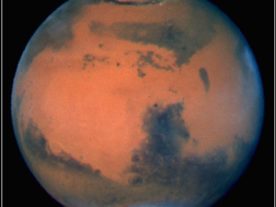The 2015 Nobel Prizes for Physiology or Medicine, Physics, and Chemistry were announced this week in Sweden.
On Monday (10/5/15) the Nobel Assembly at Sweden’s Karolinska Institutet said this year’s Nobel Prize in Physiology and Medicine has been awarded to three scientists who developed unique therapies for fighting parasitic diseases that especially impact the world’s poorest nations.
William C. Campbell from Drew University in New Jersey and Satoshi Ōmura from Kitasato University in Tokyo will each share one half of this year’s Nobel Prize in Physiology and Medicine for developing treatments to fight infections caused by roundworm parasites.
Among the diseases caused by these parasites are River blindness and Lymphatic filariasis, which include Lymphedema, Elephantiasis and Hydrocele in men.
The pair found that derivatives of a compound called Avermectin can be quite effective at lowering the prevalence of those diseases as well a growing number of other parasitic diseases.
Tu Youyou, from the China Academy of Traditional Chinese Medicine, in Beijing, was awarded the other half of the Nobel Prize for her discoveries that may lead to an innovative therapies against malaria.
Youyou Tu, a pharmacologist, researched traditional Chinese herbal medicine to develop her unique malaria therapies. She found that an extract from the Artemisia annua plant, which was later called Artemisinin, proved to be highly effective against the malaria parasite in both infected animals and humans. The Artemisinin group of drugs are quite effective because they rapidly kill malaria parasites at an early stage of their development.
This year’s Nobel Prize in Physics, announced by the Royal Swedish Academy of Sciences on Tuesday (10/6/15), will be given to Takaaki Kajita of the University of Tokyo and Arthur McDonald of Canada’s Queen’s University for their work in helping to resolve a puzzle that had scientists stumped for decades.
Previously, it had been thought that neutrinos were massless sub-atomic particles. But Kajita and McDonald each conducted experiments that verified the tiny particles can undergo changes in their identities – something that requires them to have mass. The prize committee commented that the Nobel Laureate’s work has changed the understanding of the innermost workings of matter which could also help us better understand the universe.
The 2015 Nobel Prize winners in Chemistry, announced Wednesday (10/7/15) by the Royal Swedish Academy of Sciences on Wednesday (10/7/15), were awarded to Tomas Lindahl of the UK’s Francis Crick Institute and Clare Hall Laboratory, Paul Modrich from Maryland’s Howard Hughes Medical Institute and North Carolina’s Duke University School of Medicine and Aziz Sancar from the University of North Carolina at Chapel Hill.
The trio won the Chemistry prize for their research on how our cells are able to repair DNA and protect genetic material from damage caused by its own instability, as well as external factors such as UV radiation, free radicals and other cancer-causing substances. The scientist’s research could lead to the development of new cancer treatments.
The three scientists mapped several of a number of molecular systems that constantly monitor and repair damaged DNA to see how they do their work at a molecular level. If it weren’t for these tiny molecular repair stations, scientists believe that our genetic material would crumble into a complete chemical mess.
The winners in each of the three categories will share a monetary prize worth about 8 million Swedish krona, which is about 1.2 million U.S. dollars.
This year’s Nobel Prizes will be awarded on December 10th in a ceremony that will be held in Stockholm, Sweden.























good,do well !congratulations!
It is ironic that a women who worked in traditional medicine wins a Nobel Prize.